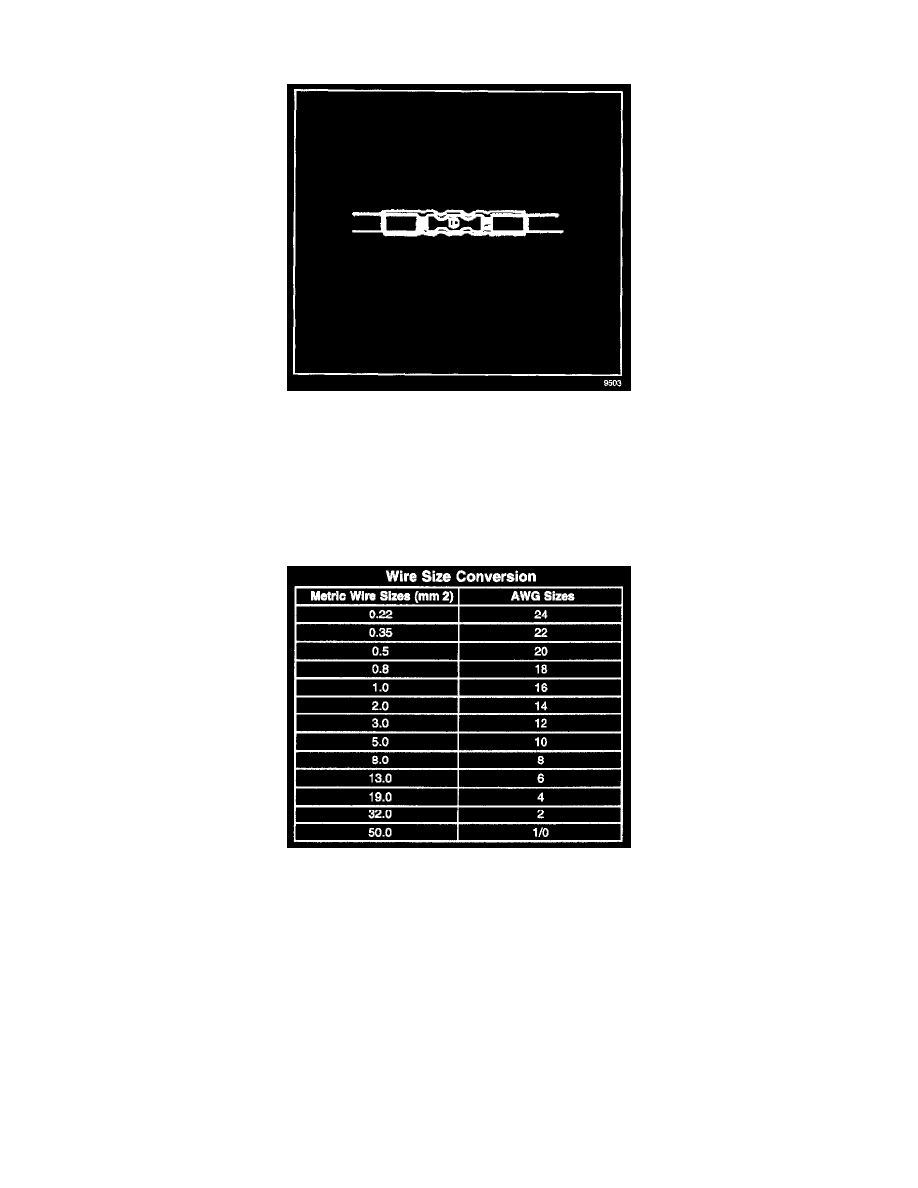C 3500 Truck 2WD V8-6.6L DSL Turbo VIN 1 (2002)

The crimper handles will not open until you apply the proper amount of pressure to the splice sleeve. Repeat steps 4 and 5 for the opposite end of
the splice.
9. Using the heat torch, apply heat to the crimped area of the barrel.
10. Gradually move the heat barrel to the open end of the tubing:
-
The tubing will shrink completely as the heat is moved along the insulation.
-
A small amount of sealant will come out of the end of the tubing when sufficient shrinkage is achieved.
Splicing Copper Wire Using Splice Clips
TOOLS REQUIRED
J 38125-B Terminal Repair Kit
1. Open the harness.
-
If the harness is taped, remove the tape.
-
To avoid wiring insulation damage, use a sewing ripper in order to cut open the harness.
-
If the harness has a black plastic conduit, pull out the desired wire.
2. Cut the wire.
-
Cut as little wire off the harness as possible.
-
Ensure that each splice is at least 40 mm (1.5 in) away from other splices, harness branches and connectors. This helps prevent moisture from
bridging adjacent splices and causing damage.
3. Select the proper size and type of wire.
-
The wire must be of equal or greater size than the original (except fusible link).
-
The wire's insulation must have the same or higher temperature rating.
-
Use general purpose insulation for areas that are not subject to high temperatures.
-
Use a cross-linked polyethylene insulated wire for areas where high temperatures are expected.
IMPORTANT: Use cross-linked polyethylene wire to replace PVC, but do not replace cross-linked polyethylene with PVC.
